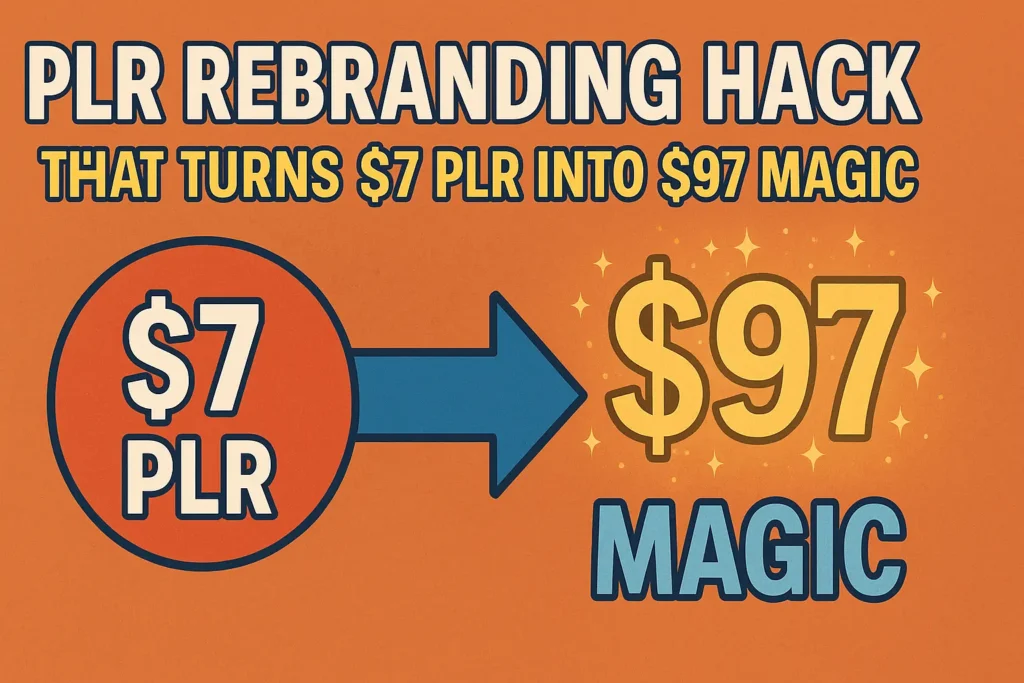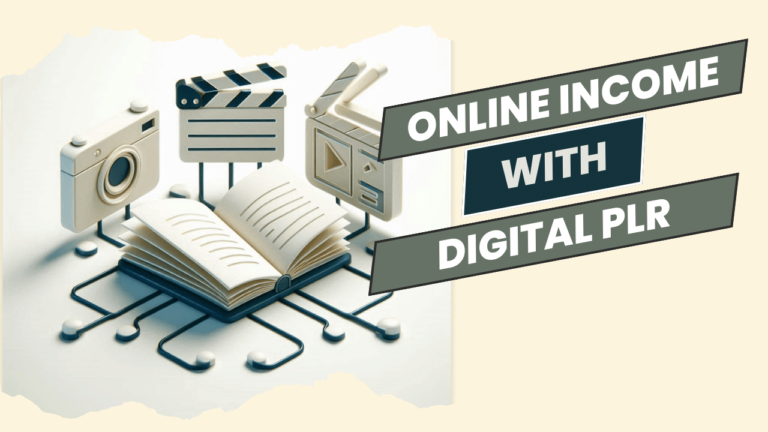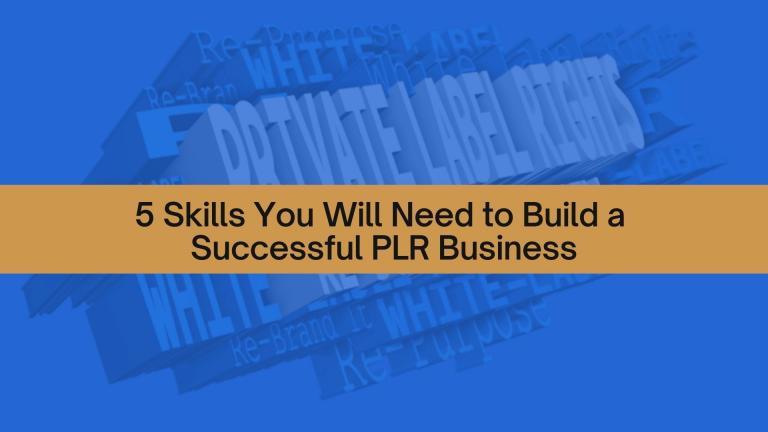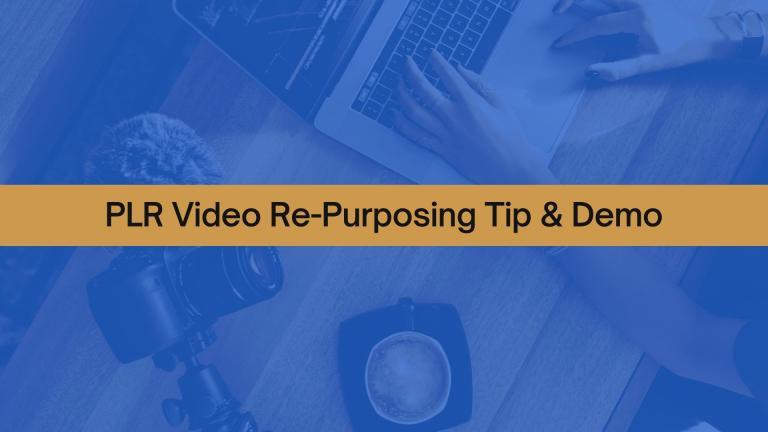The Psychology of PLR Rebranding
It’s not about a new logo. It’s about a new identity.
Here’s something that’ll blow your mind: The difference between a $7 PLR ebook and a $97 premium solution isn’t always the content. It’s the psychology behind how people see it.
Most folks think rebranding means slapping on a pretty cover and calling it a day. Wrong. Real rebranding is psychological warfare – the good kind that transforms how customers perceive value.
Think about it. Two identical products. Same information. Same benefits. One sells for peanuts, the other commands premium prices. What’s the difference? The story people tell themselves about what they’re buying.
We’re going to break down the exact psychological triggers that turn bargain-bin PLR into premium gold. Plus, you’ll get a step-by-step playbook to make it happen.

Part 1: Your First Rebrand Happens in Your Head
Before you can convince anyone else that your PLR is worth $97, you have to believe it yourself.
This is where most people crash and burn. They feel like frauds. “Who am I to charge premium prices for something I bought for seven bucks?”
Here’s the truth: You’re not just a reseller anymore. You’re an editor. A curator. A problem-solver. You’re taking raw material and turning it into something tailored for your specific audience.
Think about restaurants. They don’t grow the tomatoes or raise the cows. But they combine ingredients, add their expertise, and create an experience people happily pay premium prices for.
Your job is the same. You’re taking PLR ingredients and cooking up something special.
The Mental Shift That Changes Everything
Stop seeing yourself as someone who “just sells PLR.” Start seeing yourself as someone who creates solutions. This isn’t about lying to yourself. It’s about recognizing the real value you add.
When you edit content, add your insights, package it better, and present it to the right audience, you’re creating something new. Something worth more than the sum of its parts.
Part 2: Breaking the Cheap PLR Curse
Here’s the problem: Customers are naturally suspicious of bargain-basement prices. Their brains literally work against you.
When someone sees a $7 ebook, their mind immediately thinks “cheap,” “low quality,” or “probably not worth much.” It’s not personal, it’s just how human psychology works.
Traditional marketing doesn’t fix this. You can’t just say “It’s better now!” and expect people to believe you. Their brains won’t let them.
That’s where strategic rebranding comes in. You’re not just changing the product, you’re changing how people think about it before they even see the price.
Part 3: The Psychology Behind Premium Pricing
Let’s get into the mental triggers that make people happy to pay more.

The Anchoring Effect: Resetting Mental Price Tags
Whatever people see first becomes their mental anchor. Show them a $7 product first, and that’s their reference point. Everything gets compared to that low bar.
But what if they never see the $7 version?
When someone encounters your rebranded product, their first impression should be premium. Professional design. Sophisticated messaging. High-value positioning.
Their brain anchors on “expensive” instead of “cheap.” Game changer.
Pro Tip: Never show the “before” if you can avoid it. Let your premium version be their first and only impression.
Scarcity: Making Digital Products Feel Rare
People want what they can’t have. It’s basic human nature. But how do you make a digital product feel scarce?
Try these approaches:
- Limited enrollment periods
- Exclusive bonuses for early buyers
- “Hand-selected” or “curated” positioning
- Small group coaching calls included
Suddenly, your PLR isn’t mass-market anymore. It’s exclusive.
Social Proof: Let Others Do the Selling
People look to others before making decisions. They want to know someone else took the risk first and it worked out.
This is where testimonials become gold. But not just any testimonials. You want stories about transformation, not just “good content.”
Instead of: “Great ebook, lots of useful information.” Go for: “This system helped me land three new clients in my first month.”
See the difference? One talks about the product. The other talks about results.
Cognitive Dissonance: Making Cheap Feel Wrong
When someone’s considering your premium product versus a cheaper alternative, their brain starts fighting itself. “Do I really need to spend this much?”
Your job is to make the mental discomfort so strong that choosing the cheap option feels like settling. How?
Paint a picture of what happens when they go cheap:
- Incomplete solutions
- Wasted time figuring things out
- Missing pieces that cost more later
Then show what your premium solution delivers:
- Complete system
- Everything they need in one place
- Done-for-you components
Make them feel foolish for even considering the alternative.
Part 4: Your Step-by-Step Rebranding Blueprint
Time to turn psychology into action.
Step 1: Define Your New Identity
First, get crystal clear on who this premium product serves. Not everyone. Premium products serve specific people with specific problems.
Instead of “anyone who wants to make money online,” try “busy professionals who want to build passive income without quitting their day job.”
See how much more valuable the specific version feels?
Next, define your promise. What’s the main transformation your product delivers? This becomes your north star for everything else.
Finally, create your brand story. Why does this solution exist? What makes it different? What problem does it solve that others don’t?
Step 2: Craft Premium Messaging
Stop talking about features. Nobody cares about “10 chapters” or “50 pages.” They care about results.
Instead of: “Comprehensive 10-chapter guide to social media marketing,” Try: “The exact system I used to build a six-figure business with just 30 minutes of social media per day.”
Feel the difference in energy? One sounds like homework. The other sounds like a shortcut to success.
Use language that matches your price point. Premium products use premium words. Instead of “tips,” use “strategies.” Instead of “tricks,” use “methods.”
Step 3: The Visual Transformation
This is where most people get it right or mess it up completely. Your visuals need to match your price.
Cheap-looking design kills premium pricing faster than anything else. Invest in professional covers, landing pages, and promotional materials.
Here’s the test: If someone saw your product for the first time, would they guess it costs $7 or $97? Your design should leave no doubt.
Think clean, professional, and sophisticated. Make it look valuable from the first glance.
From Bargain Bin to Premium Shelf
The journey from PLR to premium isn’t about changing the content – it’s about changing perceptions.
You’re not just rebranding a product. You’re rebranding how people think, feel, and decide. You’re managing their mental journey from skeptical browser to eager buyer.
The most successful PLR marketers understand this secret: Value lives in the mind of the customer. Your job is to put it there.
Stop seeing your products as commodities collecting digital dust. Start seeing them as transformative solutions waiting to be unleashed.
The difference between $7 and $97? It’s all in your head – and theirs.







